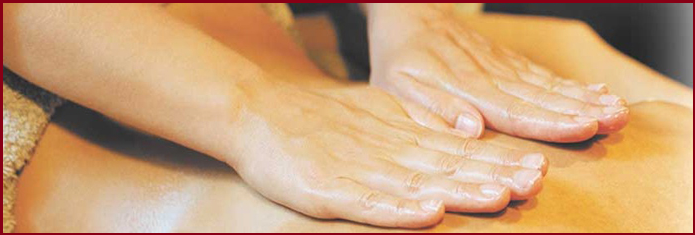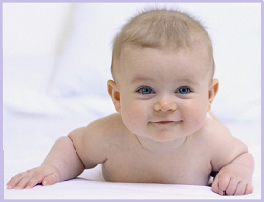Keeping Cool with warmth – crazy idea? The common sense of it is known by the Egyptians, Ayurvedics and others in tropical countries. Early postpartum mamas often enjoy hot water bottles on tummy and lower back, maybe breasts or neck, even in hot summer weather. I’ve seen it many times! OK, I haven’t researched other cultures much, just a few stories. Like using HOT temperature peppermint, green or black tea to cool down in the mideast. Sounds weird and there is more explanation than I can offer now… but here are some common sense and reflections on this dance of the opposites –
Hot tea may make you sweat – sweat evaporates and cools that way.
Many herbs have cooling energetics – many astringent, sweet, and light bitter herbs, even when ingested at warm temperature. They can be used in pregnancy and postpartum teas and foods. All mints, raspberry, oat straw, coriander, sandalwood (use pinches of the powder), fennel, cumin, tarragon, rose, chrysanthemum, cilantro, small amounts of lime (not lemon, it heats) and many other herbs can be used to cool. These are more helpful than just doing bland foods and drinks – try small amounts steeped into water and see. Midwives use more of some for the mineral content. Nettle is also cooling, though diuretic and less valuable for Vata types.
Of special note for right use – small pinches cardamom, even small amounts of clove and turmeric can transform food and experience with their penetrating (“pungent”) qualities, yet post digestively cool. Licorice, mostly avoided in pregnancy except in small amounts in formulation by Chinese or Ayurvedics is tonic for adrenals, pitta and Vata. Yet licorice should be avoided with HBP and water retentions.
For the same reason, minimizing energetically (beyond temp) foods and drinks like red meats, most fish, tamarind, chilies, raw garlic and onions, tomatoes, and most citrus helps, even if they are served cool temp.
So the naturally abundant sweet juicy fruits and sweet, astringent, bitter and moist vegetables – most of them ripened with the heat, have cooling and gently cleansing effect though they nourish and build. Coconut, grapes, and pomegranate stand out. Peaches, most melons, later season mangoes, succulent green vegetables and opo (loki) squashes are particularly refreshing and cooling yet nourish, rebuild and are easy to digest.
Vegetables and more astringent fruit like apples and pears need the heat of cooking and seasonings for the early or unusually vata exacerbated postpartum system to prevent gas, bloating, and less obvious signs of malabsorption or incomplete products of digestion. The dark green leafies do us more good in the spring and fall when they naturally are happiest in the garden, and after a few weeks post-pregnancy. Easy to digest well cooked mung or matpe lentils, or for non-vegetarians, something like long cooked chicken soup complements protein needs, along with the use of cooling energetic dairy (milk), a few almonds, moist dates and and grains during the day, even though the milk is taken warm and with at least a little (sometimes much more) digestive spice, and generous use of cooling but digestively enhancing clarified butter.
Hanging out by waterfalls, rivers, and in the moonlight sound nice? Exercise for the joy of it, which means after birth, after some weeks, gently strolling. And in water is great for pregnancy and after 6 weeks post; sleeping outside may nourish later stages, walking barefoot in the cool grass or seashore – you remember these probably. These are tonic behaviors which warm the heart, nourishing a feeling of connectedness with Mother Nature and ourselves and helping us feel at home where we are – part of what we these days call “chilling out”.
Things which expand the capillaries in relaxation can help disperse core body heat and still support our primary topic, of postpartum rejuvenation. Core warmth is super important for rest, digest and transformative rejuvenations needed.
Sweet floral essential oils are well known for their antidepressant, usually cooling, relaxing and calming properties. Rose, geranium, jasmine, vetiver, lavender, ylang ylang, chamomile, helichrysum and others. They “warm” the transformational processes – hormones, heart, liver and blood vessels with their potent and gentling properties. They put us in touch via mind-body coordination whereas strong pungent coolants like peppermint and eucalyptus may create too much sudden change, contractions from the overwhelm and be too extreme to nurture the needed subtle experience of connectedness and self-referral, self-correcting dynamics of awareness.
Warm oil Ayurvedic massage actually helps support this dual need of the times – It supports the body’s thermoregulation to work better, which was slowed down from natural fatigues of birthing and caring for Baby – so the inner heater and cooler both work better. It also supports the core work so needed after such deeply transforming as well as usually hard labor to be tended to. IE, Relaxation puts us into rest, digest and transform, rejuvenate, while stress hormones put us into a state of fight or flight which tightens us up and keeps us HOT and geared for outer, not inner work.
Those living in hot damp climate feel the heat the most. They should do less of these heat therapies, favoring warm instead of hot foods and drinks, a little less heavy on food and massage oils, and delay their massage treatments for maybe 3 days after the birth says Dr. Bharat Vaidya, quoting the ancient classical textbooks in Ayurveda on postnatal care. Hot damp weather does a lot of the needed work and is a blessing. Too much oily massage and heat too soon can increase kapha unduly – the priority the first few days still is to re-kindle or strengthen Agni, the digestive fires, which is specifically heating. Professional guidance and care is particularly helpful during the first weeks to navigate this dance of the opposites in our various tissues and systems best. Mothers DO need to AVOID air conditioning as much as possible. The cold draft of “refreshing” AC can exacerbate natural weaknesses. OK, I dare you to carry on this conversation with me if you doubt.
I shared some of this with a midwife who was grateful to understand why their clients (in Florida summertimes!) would not let them turn on any AC even for giving birth. Everyone was dripping, but mama’s system, and baby’s, work best with this integrative experience of keeping their cool via mind-body integration awareness, supported by warmth.
And try the cooling effect of sattva, if you know what that means. You could start with simple alternate nostril pranayama. At this time, don’t worry which hand, and if baby is falling asleep in one arm at the breast – great – now is your time. Baby needs 10-15 minutes often, to settle into stable deeper sleep. Perfect time for you to purr. This breath practice in the postpartum time should be done without any strain, force or breath retentions – simply inhale in through one nostril closing the other, naturally full breath, then switch nostrils for a naturally full out, and in on that side. Switch – out, in. Switch – etc. for about 10 minutes. The shift in brain wave patterns accompanies a chilling out mentally, physically and emotionally, a balancing of core and surface circulation and comfort, and much more.
Does this biochemistry make sense to you? Let me know! And consider Ayurvedic Midwife Terra Rafael’s course, Enhancing Fertility, Pregnancy and Birth with Ayurveda (21 hours), and my core class on postpartum ayurveda, Ayurvedic Maternal and Newborn Care.
Warmly,
Ysha


